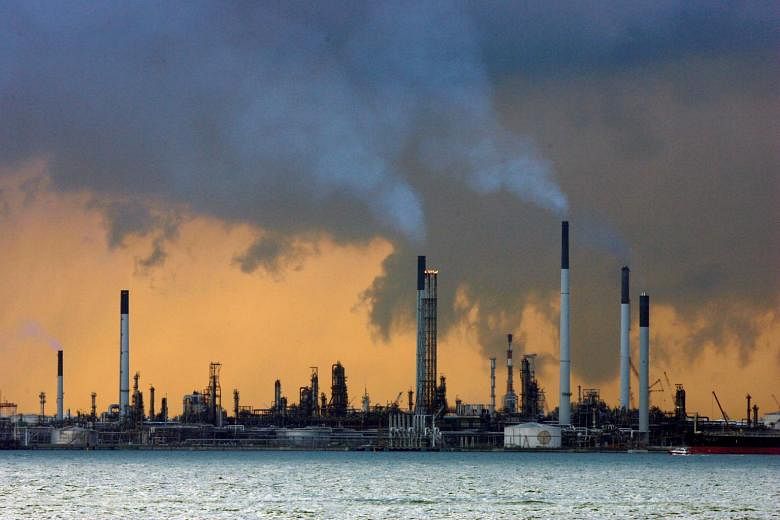LONDON (REUTERS) - A cynic, wrote the Irish wit Oscar Wilde, is someone who knows the price of everything and the value of nothing.
But at COP26, the climate talks starting in Scotland in just over three weeks, establishing a global price for carbon might be the only way to show the true value of the planet.
A global pricing mechanism for carbon dioxide emissions could make polluters, and maybe their customers, acknowledge and pay the full environmental cost of the oil and gas that drives the wheels of industry and the lifestyles of many consumers.
Many countries have committed to a goal of "net zero" emissions by 2050 to avert the worst of global warming.
But without putting a price on CO2, it is hard for governments to force polluters to cut emissions without disadvantaging them unfairly, for investors to assess their risks, or for companies to know what costs lie ahead.
"Please put a price on carbon!" was the plea to COP26 from Francesco Starace, chief executive of Enel, Europe's biggest utility, speaking on Tuesday (Oct 5) at the Reuters Impact conference.
COP26 aims to secure far bolder action from the nearly 200 countries that signed the 2015 Paris Agreement to try to limit global warming to 1.5 degrees Celsius, and a global carbon price is one of the mechanisms they hope will help achieve that.
Bob Dudley, former head of oil company BP and now chair of the Oil and Gas Climate Initiative trying to help the fossil fuel industry decarbonise, said a proper valuation of emissions was one of his group's five main goals.
Theodor Swedjemark at European power engineering group ABB said "aligning carbon-based trade policies" was one of the business community's main requirements from COP26.
The need is clear.
The European Union, where a tonne of carbon dioxide on its Emissions Trading System costs about 60 euros (S$94.30), plans to introduce a carbon levy on imports to shield its own industry from competitors whose emissions are taxed less heavily.
The World Bank says only 22 per cent of global emissions were covered by pricing mechanisms last year and the International Monetary Fund put the average global price at a mere $3 a tonne.
Yet the OECD estimates that a price of US$147 is needed before 2030 to create enough economic incentives for producers and users of fossil fuels to slash emissions to net zero by 2050.
Whose price?
The challenge of finding a solution at COP26 that can work on an agreed basis for industrialised and developing economies alike will be huge.
"We have to apply carbon pricing as part of our economics," Tengku Muhammad Taufik, chief executive of Malaysian state energy firm Petronas, said at the Reuters conference.
But he noted that carbon was priced at only about US$5 to US$10 a tonne in Southeast Asian economies, compared with over US$130 in Sweden at the other end of the spectrum.
"One of the key things at ... COP26 ... is going to be a need to standardise, to verify, to account for this."
Starace said the important thing was to get started.
"Put the price on carbon in your own territory ... and then worry about how that carbon price relates to the other carbon prices," he said. "But price it - because if you start with that, then this will finally adjust."
Institutional investors and asset managers would also welcome any progress.
They are already having to create tools to assess the growing environmental risks to their investments, from climate disasters to new regulations, to "stranded" fossil-fuel assets that might never be recovered and shifting consumer sentiment.
At least now, especially after a series of violent weather events showed the dramatic effects of climate change, there is little argument that saving the planet is as much an economic imperative as an environmental ideal, investors say.
"It became quite simple for us when we started to see that climate change is a risk to our ability to deliver on our financial commitments," said Morten Nilsson, chief executive of BTPS, Britain's largest private-sector pension scheme with over 50 billion pounds (S$92.3 billion) of assets.
"Actually, we see opportunities in this change to a low-carbon economy ... and if we don't attack those the right way, we could be a loser instead of a winner."
As Wilde might say: not just a price, but also a value.

